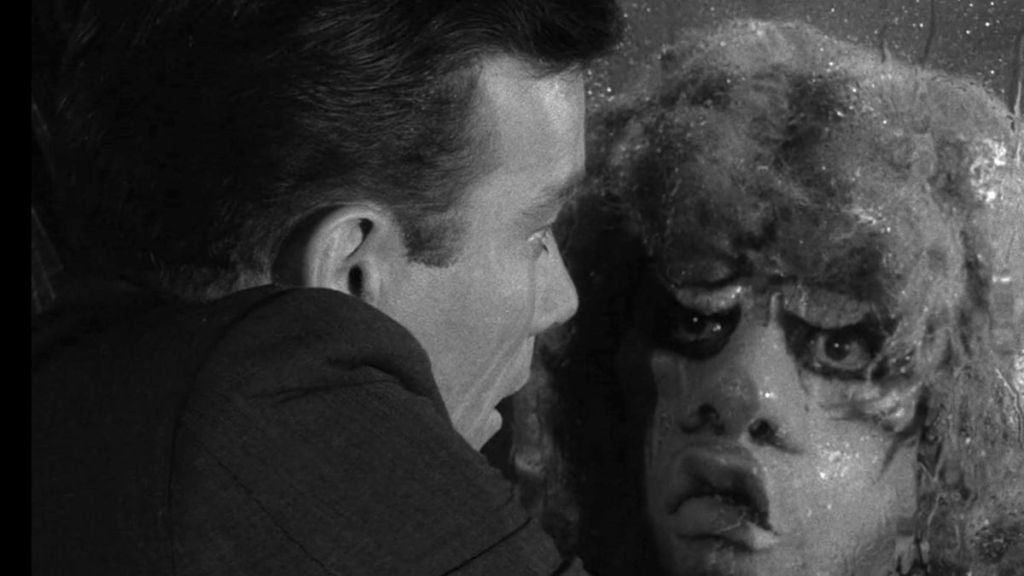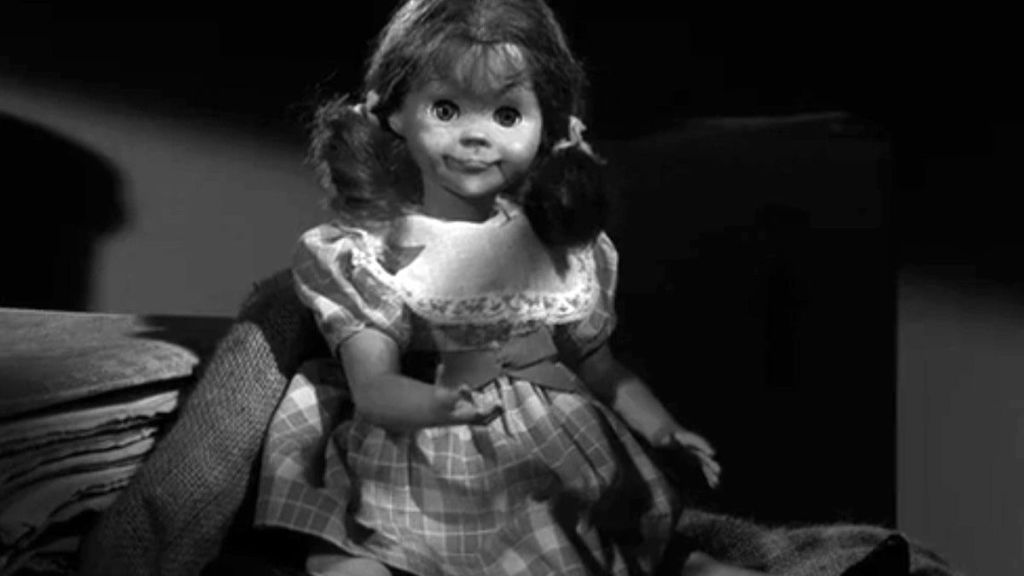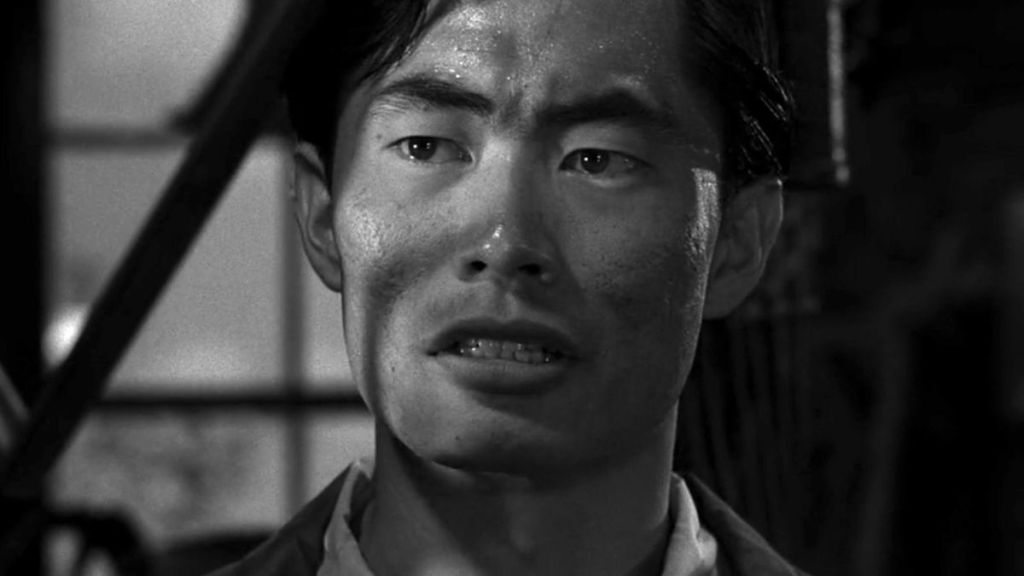
When it comes to The Twilight Zone, it was almost always at its best when creator Rod Serling was writing the episode. And, slightly more often than not, that was the case. When it wasn’t the case, though, the episode could feel far removed from the show’s tone as a whole. For instance, “The Chaser,” one of the few episodes that has aged outright poorly. Or Season 2’s “The Howling Man,” one of the series’ more disjointed and bizarre stories. However, not every top-tier episode was penned by Serling. In fact, most people’s favorite episode wasn’t written by him.
What follows are the top examples of how a The Twilight Zone episode could work even without Serling serving as the ground up architect of its narrative. Note that, even if it wasn’t a Serling original idea, like how he adapted Lynn Venable’s short story, “Time Enough at Last,” it counted as a Serling-scripted episode.
1) “Perchance to Dream” — Season 1, Episode 9

Of The Twilight Zone‘s 36-episode first season, Serling penned all but eight of them. Charles Beamont wrote four of the remaining eight, including “Perchance to Dream,” which was based on his own short story of the same name.
Richard Conte stars as Edward Hall, a man with a heart condition who has been experiencing a recurring nightmare. He fears that, the next time he falls asleep, he won’t wake up. Now, reality is starting to blend in with his dreams, e.g. the receptionist at his doctor’s office looks very much like a woman from his dream. But, as it turns out, he walked into the doctor’s office, laid down on his couch, fell asleep, and died with a scream.
2) “The Invaders” — Season 2, Episode 15

Like with the first season, Serling wrote all but eight segments of The Twilight Zone Season 2, which consisted of 29 total episodes. And, of the episodes throughout the five-season run he didn’t write, many of them were penned by either Charles Beaumont or Richard Matheson. “The Invaders” was a Matheson episode, one of two he wrote for Season 2.
Agnes Moorehead of Bewitched fame plays an unnamed woman who lives in a remote farmhouse. One evening, she finds that her peaceful home has become the stomping ground of a laser gun wielding spacemen. But, in reality, the mute woman we’ve been watching the whole time is really the alien, and the little spacemen are actually astronauts with the U.S. Space Force.
3) “Long Distance Call” — Season 2, Episode 22

One of the six episodes shot on videotape, “Long Distance Call” can be tough to watch because it looks so considerably cheaper than every episode not filmed on videotape. But as a narrative it’s fairly classic The Twilight Zone. It even features Bill Mumy, one season before he returned to the show for the A-list “It’s a Good Life.”
In “Long Distance Call,” Mumy plays little Billy Bayles, who is devastated when his grandmother passes away at his birthday party. He begins to use her gift, a little toy telephone, but worries his parents when he claims it’s his deceased grandmother talking back on the other end. It’s revealed that he’s right, she is on the other end of that line, and Billy’s mother accidentally breaks the phone. Distraught, Billy runs out of the house and straight into the family’s garden pool. On the verge of death himself, his mother begs grandma to allow her grandson to keep on living. The last few scenes are a little loose on logic (Was grandma trying to take over her grandson? How does she have any control over whether he lives or dies?) but it’s a fun episode, and the moment Billy’s mom hears her deceased mother-in-law on the phone is about as The Twilight Zone as The Twilight Zone can get.
4) “Nothing in the Dark” — Season 3, Episode 16

Serling wrote 21 of The Twilight Zone Season 3’s 37 total episodes, and a few of those he didn’t pen were quite solid. For instance, “Nothing in the Dark,” a touching tale featuring a pre-fame Robert Redford.
This episode was one of seven written by George Clayton Johnson, who specialized in especially heartfelt narratives, e.g. “Kick the Can,” which was later remade for Twilight Zone: The Movie with Stephen Spielberg at the helm. But “Nothing in the Dark,” which follows an elderly woman with a strong fear of death who helps a young man who ends up being Death himself, is his best work.
5) “Little Girl Lost” — Season 3, Episode 26

Quite a few The Twilight Zone episodes went on to inspire classic films of Hollywood history. In the case of “Little Girl Lost,” it was pretty direct inspiration for Tobe Hooper’s Poltergeist. It was another Matheson episode, one of three he wrote for Season 3 (and 16 overall).
The story follows a six-year-old girl who passes into another dimension within her own home. Now her parents frantically attempt to retrieve her from that dimension. They end up doing so via the use of a rope fed into a portal, which was exactly how little Carol Anne Freeling was retrieved in Poltergeist.
[RELATED: The Most Iconic Episode of The Twilight Zone Actually Got a Remake (But Fans Forgot About It)]
6) “I Sing the Body Electric” — Season 3, Episode 35

Before he went on to start an anthology series all his own, Ray Bradbury contributed a few scripts to The Twilight Zone. Only one of them was made, and that was “I Sing the Body Electric,” featuring, among others Veronica Cartwright, one year shy of The Birds and 17 years shy of Alien.
It’s the story of Mr. Rogers (no, not that Mr. Rogers), the widowed father of three children who takes them to Facsimile Ltd., a company that can construct for them a grandmother. Grandma turns out to be able to read human emotion, too, and while one of the three children doesn’t accept “her,” she comes to after learning the bot’s tender side (not to mention the fact that this maternal figure, unlike her mother, cannot die). There’s not a twist ending, as is the typical The Twilight Zone standard, but it’s a fantastic episode, nonetheless.
7) “Nightmare at 20,000 Feet” — Season 5, Episode 3

Serling wrote just under half of Season 4’s 18 episodes. And, in the subsequent year, Serling continued to write fewer episodes compared to his output throughout the first three seasons. Specifically, of Season 5’s 36 total episodes, Serling penned 16. Yet, that surprisingly enough did not include what is considered by many to be not just the best episode of Season 5, but also of the series as a whole: “Nightmare at 20,000 Feet.” Instead, this was a Matheson episode, and it was directed by none other than Lethal Weapon and The Goonies‘ Richard Donner.
The narrative, of course, follows William Shatner as Robert Wilson, a man who has just left a mental health clinic and is now on a flight where he hallucinates a gremlin toying with the wing. Or is he hallucinating it?
8) “Living Doll” — Season 5, Episode 6

It’s rare that a show’s final season has as much claim to being the best season as the show’s debut year, but that’s how remarkably consistent The Twilight Zone was. The show’s final year housed not only “Nightmare at 20,000 Feet,” but the Charles Beaumont-penned “Living Doll,” as well. And, like how “Little Girl Lost” was a clear inspiration for Poltergeist, “Living Doll” was a clear inspiration for Child’s Play.
Telly Savalas plays Erich Streator, new husband to Annabelle and stepfather to Christie. He’s having a hard time adjusting to these new roles in his life, so much so that when his daughter begins claiming her new Talky Tina doll can speak for real, he reacts harshly. But he soon learns there’s truth to her claims, which exacerbates his behavior and worries his wife more than she already was. By the time she learns the truth about Talky Tina, though, it may very well be too late for Erich.
9) “Stopover in a Quiet Town” — Season 5, Episode 30

Earl Hamner, Jr. wrote eight episodes of The Twilight Zone and, for the most part, they’re weak. For instance, his “The Bewitchin’ Pool” (the series’ final episode) and “Black Leather Jackets” are widely considered among the worst The Twilight Zone ever had to offer.
It’s surprising “Stopover in a Quiet Town” is so solid. It’s pretty straightforward The Twilight Zone, too, equipped with an ending that seems like it could have come from Serling himself. We focus on a couple who find themselves in a seemingly abandoned town, one they cannot escape. By episode’s end, we learn the same thing they do: It’s not a real town, it’s a child’s toy.
10) “The Encounter” — Season 5, Episode 31

Almost certainly the most controversial episode of The Twilight Zone, “The Encounter” wasn’t aired after its initial broadcast for over 50 years. It was only one of two that was written by Martin M. Goldsmith, and like “What’s in the Box,” a tale about a TV that can apparently show you your future, it’s a fantastic episode.
It’s almost surprising “The Encounter” wasn’t written by Serling. It tackles race relations and does so in a brilliant way. The story follows two very different individuals, both in terms of ethnicity and age, as they find themselves trapped in an attic with a magical sword. What initially seems a cordial enough dynamic becomes increasingly hostile until the point lives are lost.
The post 10 Best Episodes of The Twilight Zone Not Written by Rod Serling appeared first on ComicBook.com.
